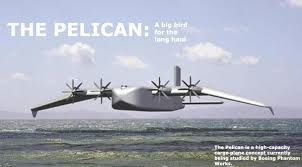
Breaking News
 Global Exclusive: The January 6th Pipe Bomber's Identity Has Been Discovered,...
Global Exclusive: The January 6th Pipe Bomber's Identity Has Been Discovered,...
 Capitol Police Officer Shauni Kerkhoff Identified as J6 Bomber...
Capitol Police Officer Shauni Kerkhoff Identified as J6 Bomber...
 Why Dual Engine Failure Changes Everything -- Louisville Crash Update
Why Dual Engine Failure Changes Everything -- Louisville Crash Update
 Transforming Storage Shelf / Workbench - Small Space Organization
Transforming Storage Shelf / Workbench - Small Space Organization
Top Tech News
 HUGE 32kWh LiFePO4 DIY Battery w/ 628Ah Cells! 90 Minute Build
HUGE 32kWh LiFePO4 DIY Battery w/ 628Ah Cells! 90 Minute Build
 What Has Bitcoin Become 17 Years After Satoshi Nakamoto Published The Whitepaper?
What Has Bitcoin Become 17 Years After Satoshi Nakamoto Published The Whitepaper?
 Japan just injected artificial blood into a human. No blood type needed. No refrigeration.
Japan just injected artificial blood into a human. No blood type needed. No refrigeration.
 The 6 Best LLM Tools To Run Models Locally
The 6 Best LLM Tools To Run Models Locally
 Testing My First Sodium-Ion Solar Battery
Testing My First Sodium-Ion Solar Battery
 A man once paralyzed from the waist down now stands on his own, not with machines or wires,...
A man once paralyzed from the waist down now stands on his own, not with machines or wires,...
 Review: Thumb-sized thermal camera turns your phone into a smart tool
Review: Thumb-sized thermal camera turns your phone into a smart tool
 Army To Bring Nuclear Microreactors To Its Bases By 2028
Army To Bring Nuclear Microreactors To Its Bases By 2028
 Nissan Says It's On Track For Solid-State Batteries That Double EV Range By 2028
Nissan Says It's On Track For Solid-State Batteries That Double EV Range By 2028
Airborne Giant with 150 metre wingspan

- that's equivalent to 17 M-1 main battle tanks - would need 76 tires to cater for the weight and be almost twice as big as the largest aircraft currently in existence, the Russian Antonov An-225. The potential applications for such a huge vehicle capable of high-speed, long-range flights goes well beyond military cargo and troop deployment. The Pelican could be used as an airborne platform for re-usable space-vehicles and could also enter the commercial worldwide freight market currently dominated by shipping.
The aircraft would be designed to fly altitudes of only 20 feet above the sea in order to take advantage of the aerodynamic phenomenon called "ground effect" that reduces drag and greatly increases range and efficiency. The Pelican of the feathered variety employs this same technique.

 Carbon based computers that run on iron
Carbon based computers that run on iron

